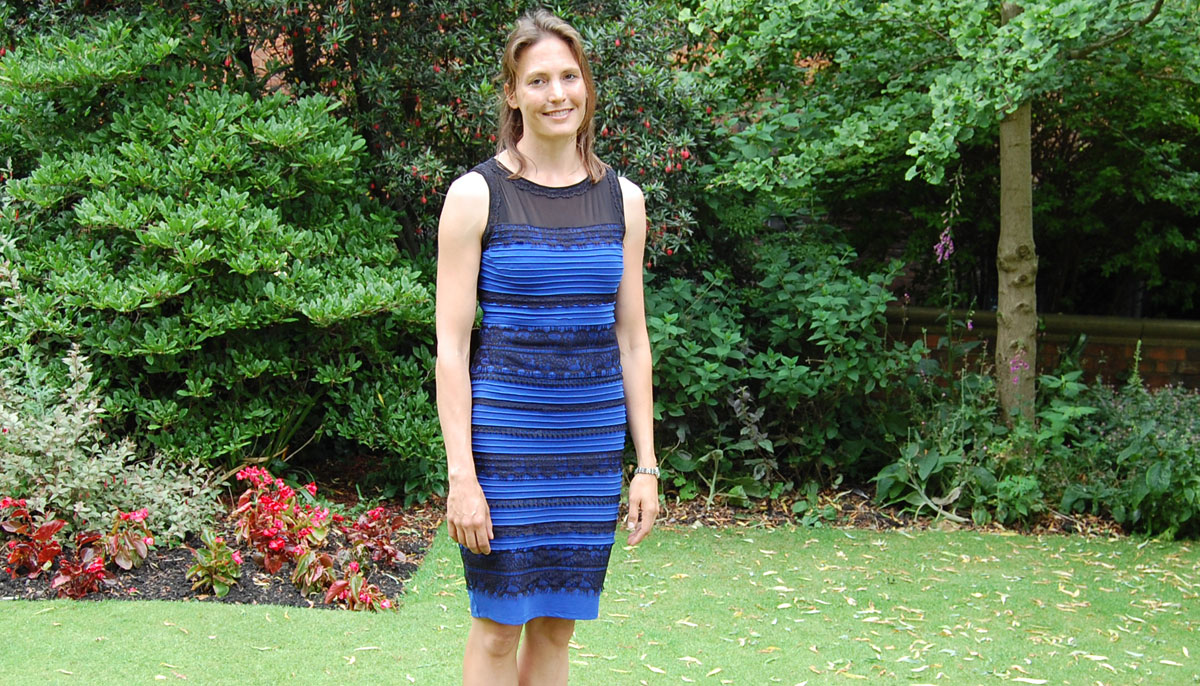Is the colour you see the same colour as I see?
Is the colour I see the same as the colour you see?
Published on: 17 November 2015
Professor Anya Hurlbert addresses whether people interpret colour the same way with BBC 4 and ‘that dress’ that became an internet sensation.
Broadcast on Wednesday 18th November on BBC 4 at 9pm, ‘Colour: The Spectrum of Science’ explores what colour is, what it does and why colour doesn’t exist outside of our perception.
One day in summer a black cloth tent appeared in the Quad for filming with BBC 4. Inside a tailor’s mannequin dressed in “that dress” – the dress which became an internet sensation as people argued over whether it was blue and black or white and gold.
And on hard, Professor Anya Hurlbert from the Institute of Neuroscience with BBC presenter Helen Czerski to explain why colour perception is personal.

And on the BBC webpages Helen explains why colour is so personal:
Colour is an essential part of our world. And, with a bit of filtering and a bit of background knowledge, science and culture and history and beauty are revealed. Watch Colour: The Spectrum of Science to see just some of the amazing stories the world has to tell.
I think that the reason people asked is because they want reassurance: colour is so important to us that it’s vital it’s the same for everyone. I think this apple is red and I want you to think the same thing.
Otherwise, how do I know that my interpretation is right or whether it means anything at all? Surely a red apple is red, and that’s the end of it. But how do you check? And then along came The Dress.
Is The Dress blue and black or white and gold?
It turned out that people don’t always interpret the world in the same way and it made such huge social media waves because it seemed so unbelievable.
The other thing that stands out about colour – both the colours we do see and the ones that we don’t (ultraviolet, infrared and far out on the spectrum on either side of them) – is how important it is to be able to separate the colours out.
The world gives us mixtures of colours that are overlaid on top of each other, and you can easily filter some out and leave the rest. When we use an infrared camera, we’re choosing to look at infrared light and nothing else. When a telescope looks for x-rays in space, it ignores everything else. Our eyes see one slice of what’s there, and we’re blind to the rest.
Colour: The Spectrum of Science is on BBC 4, Wednesday 18th November at 9pm and then on the BBC iplayer.



